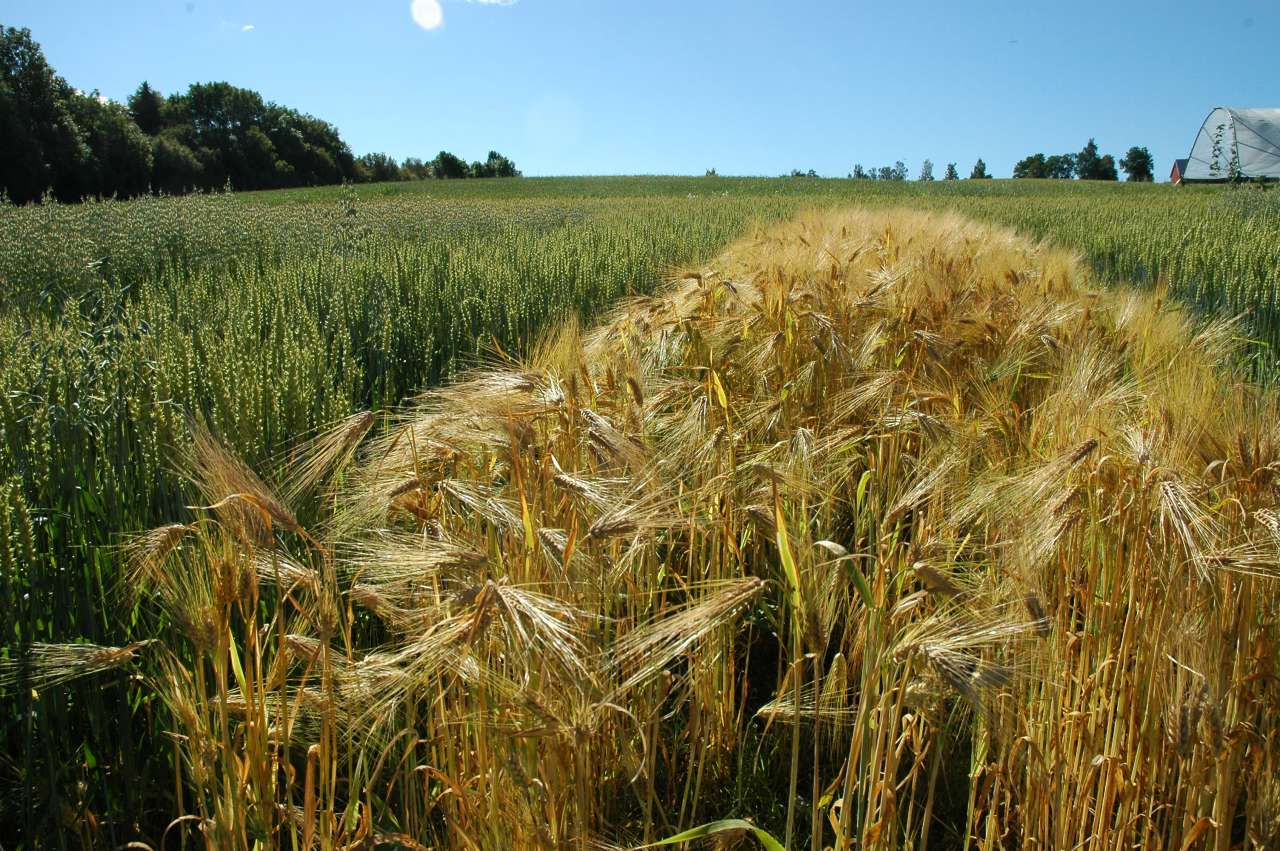Increasing grain yield on existing land

Photo: Jon Schärer.
There is a huge potential to increase Norwegian grain production. This is mainly because the arable land we currently use has a significantly higher potential yield than the volume currently harvested. Analyses show that this "yield gap" is greater in Norway than in other European countries.
Yield gap is the difference between the theoretically achievable yield potential and the actual yield obtained through practical cultivation on a farm level. For Norwegian grain, the general yields have stagnated, and the arable area has been reduced since the 1990s.
The aim of the yield gap project is to identify main yield constraints and areas with unexploited yield potential. Researchers, the grain industry and also society need more knowledge about the yield potential in different regions on the basis of natural conditions. The same applies to the effectiveness of different agronomic measures and the interaction between these.
This is the first time yield potential has been simulated for grain species in Norway, and the analyses show that the yield gap in Norway is greater than the European average, including that of most other Nordic countries. Till Seehusen believes there are many reasons for this.
"The short growing season is very challenging here in Norway, particularly if there is a lot of precipitation when a field is being prepared or harvested. Norway also has a lot of small farms on which many grain producers are part-time farmers. This means it can be difficult for them to perform all necessary field operations at the right time and under optimal conditions. In addition, average field size is smaller than in most other countries. This leads to a higher proportion of headlands, which are more susceptible to soil compaction and reduced yield."
However, comparatively high grain yields in recent years confirm that even small changes can have a large effect if the conditions are right.
Contacts

Till Seehusen
Research Scientist
-
Division of Food Production and Society
(+47) 932 69 878 till.seehusen@nibio.no Office Location: Apelsvoll
Contacts

Till Seehusen
Research Scientist
-
Division of Food Production and Society
(+47) 932 69 878 till.seehusen@nibio.no Office Location: Apelsvoll
Publications
Abstract
No abstract has been registered
